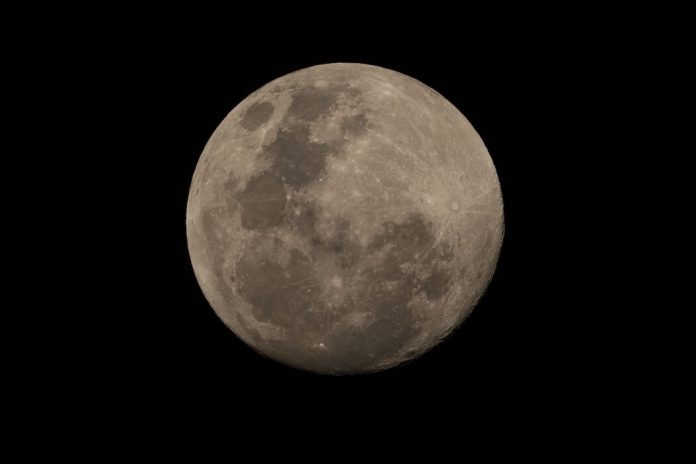The Hunter’s Moon, also known as the Supermoon, is an extraordinary event that offers photographers a chance to capture the moon in its fullest and brightest state. With the Nikon Z8‘s cutting-edge features, you’re equipped with everything you need to photograph this celestial beauty in all its glory. This guide will walk you through the best settings, tips, and techniques to ensure you capture stunning images of the largest full moon of the year.
1. Preparation: Planning Your Shot
Before setting out to photograph the Supermoon, a little preparation goes a long way.
- Check the Date and Time: The Hunter’s Moon occurs once a year, so be sure to check your local lunar calendar for the exact date and time of the Supermoon rise. 17 October
at 10:26pm (Hunter’s Moon at peak). The Hunter’s Moon, traditionally named after the time when hunters were most active, occurs when the moon is at its closest point to Earth, making it appear larger and brighter than usual—hence the term ‘supermoon.’ - Location Matters: Choose a location away from city lights to avoid light pollution. Open areas like beaches, fields, or mountaintops provide clear views of the horizon as the moon rises.NSW: Bondi Beach, The Royal Botanic Gardens, Jervis Bay
VIC: The Yarra River, St Kilda Beach, Mornington Peninsula
QLD: Kangaroo Point Cliffs, Brisbane Botanic Gardens
WA: Cottesloe Beach, Kings Park
SA: Glenelg Beach, Mount Lofty
TAS: Franklin, Hobart’s Eastern Harbour, Kunanyi / Mount Wellington
NT: Waterfront Precinct, Stokes Hill Wharf, Nightcliff Beach or Jetty - Weather Forecast: Cloud cover can ruin your shot, so check the weather forecast and pick a clear night for the best results.
2. Gear Checklist
Here’s what you’ll need for a successful moon photography session with the Nikon Z8:
- Camera: Nikon Z8
- Lens: A telephoto lens (300mm or longer) to capture detailed close-ups of the moon.
- Tripod: A sturdy tripod is essential for keeping your camera steady during long exposures.
- Remote Shutter Release: This helps to eliminate camera shake when taking photos.
- Spare Batteries and Memory Cards: Shooting the moon requires time and patience, so ensure you have backups.
3. Camera Setup: Best Settings for Moon Photography
The Nikon Z8 is packed with powerful features that can help you capture sharp, high-quality images of the Supermoon. Here’s how to set up your camera for the best shot:
- Mode: Switch to Manual Mode (M) for full control over your settings.
- Aperture: Set your aperture between f/8 to f/11. The moon is very bright, and using these apertures will help maintain sharpness and detail.
- Shutter Speed: A good starting point is a shutter speed between 1/125 to 1/250 seconds. This will freeze the movement of the moon and prevent motion blur.
- ISO: Keep your ISO low, between 100 to 400. The Supermoon is bright enough that you won’t need a high ISO, and lower values help avoid unnecessary noise in your images.
- Focus: Use Manual Focus to lock focus on the moon. You can zoom in using the LCD screen to ensure the moon is sharp.
- White Balance: Set your white balance to Daylight for natural colors, or experiment with different settings like Tungsten for cooler tones.
- Image Stabilization: Turn off In-Body Image Stabilization (IBIS) if your camera is mounted on a tripod to avoid any unnecessary shake.
- Metering Mode: Use Spot Metering to ensure that the camera meters for the brightness of the moon itself, not the dark sky around it.
4. Composing the Shot
The moon itself makes a striking subject, but adding elements like foreground objects can make your photos more dynamic and interesting.
- Foreground Interest: Including objects like trees, buildings, or mountains in your composition adds scale and a sense of place to the shot.
- Rule of Thirds: Place the moon off-center to create a more balanced composition. Use the Nikon Z8’s grid lines to help with this.
- Timing: The best time to shoot the Supermoon is during moonrise or moonset, as the moon appears larger and more orange on the horizon, and you can capture it with foreground elements.
5. Tips for Enhancing Your Supermoon Photos
To make your Hunter’s Moon photos stand out, here are a few additional techniques:
- Bracketing Exposure: The moon’s brightness can be tricky to expose for. Use the Nikon Z8’s exposure bracketing feature to take multiple shots at different exposures and merge them later for the perfect balance of detail.
- Shoot in RAW: Always shoot in RAW format to give yourself more flexibility when editing. RAW files retain more detail and allow for better post-processing, especially when it comes to adjusting highlights and shadows.
- HDR Mode: Consider using the Z8’s HDR mode to capture more detail in both the bright moon and the darker foreground.
6. Post-Processing: Refining Your Supermoon Photos
Once you’ve captured your shots, post-processing is key to bringing out the best in your images. Here are some basic editing tips:
- Adjust Exposure and Contrast: Fine-tune the exposure to ensure the moon’s surface details are visible without losing the brightness. Increasing contrast can help make the moon stand out against the dark sky.
- Sharpening: Apply sharpening to bring out the craters and textures on the moon’s surface.
- Noise Reduction: If you had to increase your ISO, use noise reduction tools to clean up any graininess in the sky.
- Colour Correction: Tweak the white balance if needed to achieve your desired color tone, whether it’s warm orange or cool blue.
7. Experiment with Creative Approaches
Don’t be afraid to get creative! Try some of these ideas for unique Supermoon photos:
- Silhouettes: Position objects like trees or buildings in front of the moon to create striking silhouettes.
- Time-lapse: Use the Nikon Z8’s Interval Shooting Mode to capture the moon’s movement over time and create a stunning time-lapse video.
- Double Exposure: Use the Z8’s Multiple Exposure Mode to blend the Supermoon with another image, such as a landscape or cityscape.
Capturing the Hunter’s Moon with the Nikon Z8 is an exciting opportunity to photograph one of the most impressive celestial events of the year. With proper preparation, the right gear, and an understanding of your camera settings, you can create breathtaking images of the Supermoon that you’ll cherish for years to come. Remember, patience and experimentation are key, so take your time, enjoy the experience, and make the most of this rare photographic moment.





